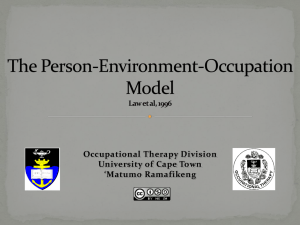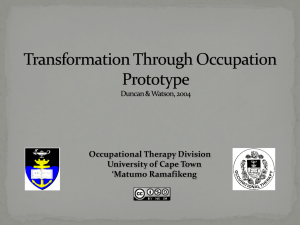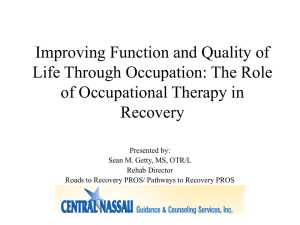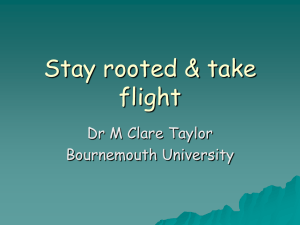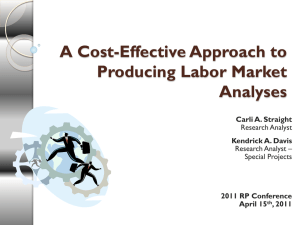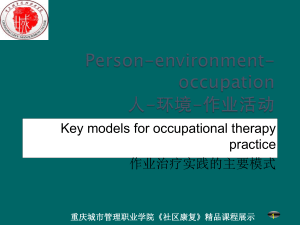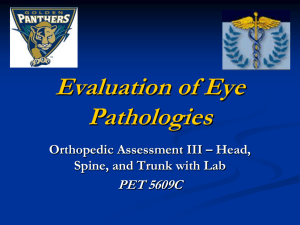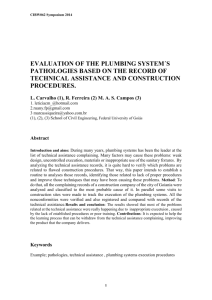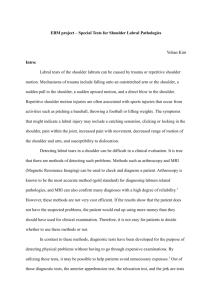Pathologies - The Digital Wood Lab
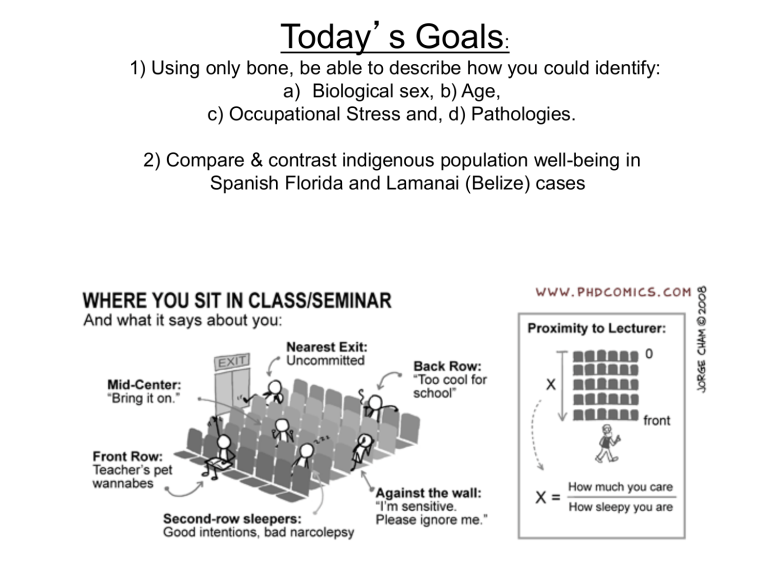
Today ’ s Goals
:
1) Using only bone, be able to describe how you could identify: a) Biological sex, b) Age, c) Occupational Stress and, d) Pathologies.
2) Compare & contrast indigenous population well-being in
Spanish Florida and Lamanai (Belize) cases
What sorts of things can a skeleton tell you?
And why would a social scientist care?
Bioarchaeology
The use of a range of biological techniques on archaeological materials to learn more about similarities and differences in the past. vs.
Forensic Anthropology
Similar definition, but in a legal setting
Today= Population Perspective
Biological Sex Age
Diet
Occupation Pathologies
Macchu Picchu (Peru) and the “ Virgins of the Sun ”
Determining Biological Sex
from skeletons
Different than Gender
Socially constructed= not born with it (more next class)
Masculinity, femininity, diff. ambiguous or in-between status
Issues of sexuality, role, & occupation
Variation Issues
Basic Etiology (i.e. hormones)
Natural Variation between males/females in population
Age differences (infants & children nearly impossible)
Environmental influences (general health, nutrition, occupation)
Determining Biological Sex
from skeletons
“ Sexual Dimorphism ”
Using the Skull
Chin, mastoid process, zygomatic arch, teeth
Using the Pelvis (usually best)
Sciatic notch, subpubic angle, sacrum
Male
Female
CHIN
MASTOID
PROCESS
ZYGOMATIC
ARCH
TEETH
(in adults)
Female
Sacrum
Subpubic
Angle
Sciatic Notch
Male
In-Class Exercise
More female More male
Determining Biological Age
from skeletons
Skull Sutures
Tooth Eruption
Bone fusions (clavicle & other bones too)
Sternal ends of ribs (esp. 4 th rib down)
Pubic Symphisis
Fetal → Infant (0-3 years) → Child (3-12 yrs)
Adolescent (12-20) → Young Adult (20-35)
Adult (35-55) → Old Adult (55+)
Skull (cranial) Sutures
Tooth Eruption
Epiphyseal Fusion
Sternal End of Rib
Advantageous because less obviously related to occupational stress
Child
Most of you
Mid-30s
Elderly
Adult
In-Class Exercise
Pubic Symphsis
Occupational Stress
Muscle attachments (longbones)
Dental wear (especially in front teeth)
Arthritis in joints and vertebrae
Modifications in joints related to work
Occupational Stress
Metric criteria (things you can measure)
Bone as an organ
Bone adapts to physical stress like lifting, pushing, pulling etc.
Generally, more pressure & stress makes longbones thicken so they don ’ t bend or break
Occupational Stress
Non-Metric criteria
(things you can only note presence or absence of)
Like thickened muscle attachments
a
Occupational Stress
More Non-Metric features bioarchaeologists look out for
Kneeling Facets b c
Relation of the femur, tibia, and patella during kneeling, a more sustained form of hyperflexion.
Adapted from Trinkaus (1975).
d
Figure 1. Femoral non-metric traits, including: a) Charles ’ facet [EBND 1.272]; b) Martin ’ s facet [EBND 3.117]; c) osteochondritic imprint [EBND 5.160]; d) tibial imprint [EBND 6.132].
Occupational Stress
More Non-Metric features bioarchaeologists look out for
Grooves in teeth
Arthritis
(usually occupation + age)
Pathologies
In bioarch, the physical consequences of different diseases or problems (usually chronic ones).
Osteological Paradox
Evidence for disease = population health?
Enamel Hypoplasia
Nutritional stress events during childhood
Pathologies
Harris Lines
Also nutritional stress events during childhood
Caries
Pathologies
Cavity
Severe Abscess
Dental Caries & Abscesses
(Diet related)
Pathologies
Severe iron deficiencies (anemia) = Porotic hyperostoses
(Diet or disease-related)
Classic Porotic Hyperostosis
Cribra Orbitalia
(usually in children)
Healed over or not?
Other Pathologies
Syphilis Tuberculosis
(collapse & fusion, usually thoracic)
Sex
Pointy chin=
Small mastoid=
Wide Pubic Angle=
Sciatic Notch=
Interpretation=
Occupation
Grooved teeth
Neck arthritis
Age
Sutures= younger than 40
Teeth= over 21
Clavicle fusion= 18-30
Rib end= 20-35
Pubic symphisis= late 20s
Interpretation= late 20s, early 30s
Pathologies
Enamel hypoplasia
Harris lines
Diet
(more next class)
You are what you eat
On river trade route. Trading center that influenced parts of Belize,
Mexico, & Guatemala
Occupied continuously from
700 B.C. to 1641 A.D. Probably the longest uninterrupted sequence in the Maya area
Indirect contract with Spanish, not immediately resettled into encomiendas or missions
